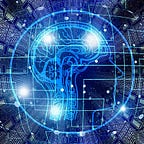IoT Cloud — An Overview of the Nucleus of an IoT Solution
The number of devices under the Internet of Things (IoT) infrastructure is growing at a decent pace. The International Data Corporation predicted that by 2025, there will be as many as 4.16 billion IoT devices connected and interacting with each other.
IoT cloud platforms play a vital role in offering data management and analysis for IoT solutions. It’s an evident fact that as the number of devices grow, so will the data. IoT cloud provides an efficient solution in terms of services required to store, process and analyze this data.
Hence, IoT cloud infrastructure is an integral part of an IoT solution for industries, enterprises and home automation.
Let’s take a look at the various layers and aspects of a typical IoT cloud architecture.
IoT Cloud: Modeled for End-To-End IoT Solutions
For an end-to-end IoT solution to maintain efficiency, it must incorporate a platform where you can store and analyze all the data that is collected from all the devices within the solution.
Since the data collected by these devices is accumulated on a daily basis, it is just not practically possible to store the data on the devices themselves or even on IoT gateways. Moreover, for sectors like manufacturing, extensive data analytics may be needed to make sense of all the data that’s collected.
An IoT cloud application provides a solution to these challenges. In an IoT cloud application, the data collected by the IoT devices in the system is relayed to gateway devices and finally to cloud platforms. Additionally, to incorporate data integrity and authenticity, data is exchanged with the cloud in a prescribed format based on a protocol like Message Queuing Telemetry Transport (MQTT) or Constrained Application Protocol (CoAP).
Brief Overview of IoT Cloud Architecture
An IoT cloud can offer various degrees of complexity based on the application.
IoT cloud architecture components include a database for storage of data, a scalable server, Cybersecurity measures (following protocols like MQTT, CoAP or HTTP), application cloning capability, device management capability, and a data analytics backend to process the data. An added plus would be a frontend web interface where users can observe the data in forms of graphs and plots.
Major tech companies like Google and Amazon are already working and competing in the domain of IoT cloud platforms, and offering a variety of these components and services.
Different Kinds of Cloud Computing Models for IoT Solutions
Most cloud service providers offer the following three kinds of cloud computing models:
· Infrastructure-as-a-Service (IaaS)
An IaaS model offers virtual storage and service to enterprises, and enables access to networking components. IaaS can help distribute critical data to different locations for improving security.
· Platform-as-a-Service (PaaS)
PaaS allows companies to create applications from the libraries and tools provided by the cloud service providers. By eliminating the need of managing hardware and software, PaaS allows organizations to focus on deployment.
· Software-as-a-Service (SaaS)
SaaS offers organizations a complete application that’s run and maintained only by the cloud service provider. Companies only need to handle working with the application without bothering about the underlying development and maintenance processes.
Advantages of a Cloud Based IoT Ecosystem
Some of the key advantages offered by the cloud in an IoT infrastructure are as follows:
· Business Continuity — In an IoT cloud solution, the software and data are not maintained in the office premises; instead, this is always accessible from the cloud through internet connection. Hence, in the event of a disaster, the cloud platform prevents loss of service/data and keeps businesses operational.
· Cost-Effectiveness — This is one of the notable advantages of using a cloud infrastructure for an IoT solution. Industries/enterprises are not required to invest in expensive hardware and maintain these equipments in-house. This minimizes the involvement of IT Support staff and cuts the cost of maintenance to a large extent. All maintenance activities, update of patches and upgrades on the cloud solution are performed by the service provider. Businesses can also pay as needed for data storage or computing.
· Inter-Device Connectivity — An IoT cloud platform along with the IoT gateway provides smooth connectivity between IoT devices in the network. The cloud and gateway infrastructure is also found to increase the life-span of IoT devices that are powered by batteries.
· Scalability — A cloud platform solution helps businesses easily upscale or downscale based on business needs. For instance, if there is a demand for increased data storage, a robust IoT cloud application will be able to accommodate this requirement.
· Flexibility — Investment in an IoT cloud application frees up internal resources and personnel; this enables businesses to focus on more important core business activities.
Challenges that the IoT-Cloud Marriage Poses
While the coming together of IoT and cloud brings a lot of benefits to the table, it also poses a lot of practical challenges:
· A huge quantity of data needs to be handled when there are multiple devices in the picture
· Managing machine-to-machine communication among several different kinds of devices having diverse protocols can be an uphill task
· Timely processing of huge quantities of sensor data is difficult
Summary
End-to-end IoT solutions are finding application in many domains including agriculture, defense, consumer appliances, and more. The major challenge with varying domains is the amount of data that will be collected. Coupled with that, there will be a requirement of effective data management and analysis. But with IoT cloud it’s safe to say that we have these bases covered.
Cloud platforms offer services like device integration, data management, and analysis in flexible service domains like PaaS, IaaS and SaaS.
Seamless amalgamation of technological advancements like machine learning and artificial intelligence with IoT cloud services offer exciting prospects for the future.
